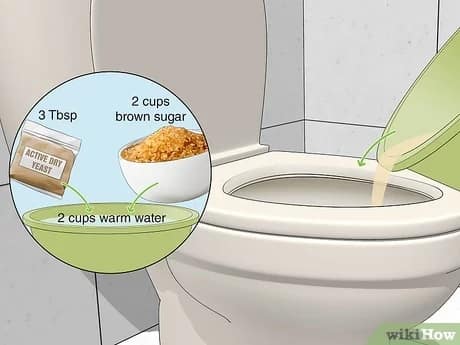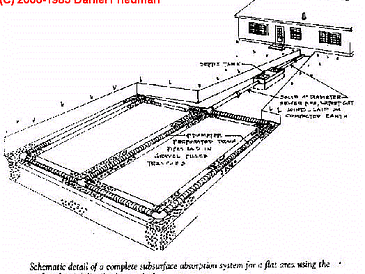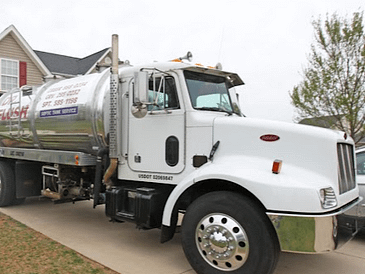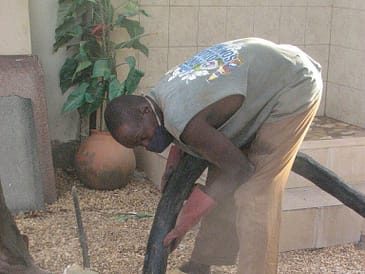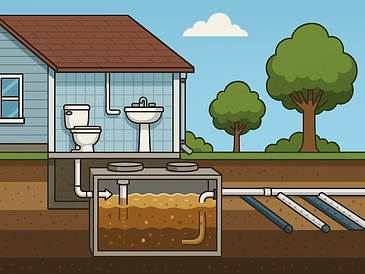Are you tired of constantly dealing with a backed-up septic tank? Have you wondered what you can do to break down solids and prevent clogs without spending a fortune on pumping services? Look no further. In this article, we will discuss some natural ways to tackle septic tank issues, including what to put in your septic tank to break down solids effectively. From active yeast to helpful bacteria and enzymes, follow our tips to maintain a healthy septic system and avoid unpleasant surprises.

I. Introduction
Brief explanation of septic tanks and the importance of maintaining them
Septic tanks are an essential part of managing wastewater for homes that lack access to municipal sewer systems. They are underground tanks that collect wastewater, allow solid waste to settle at the bottom and let other liquids to flow into a drain field. While they do a great job of treating wastewater, it’s important to maintain them regularly by pumping out the waste that accumulates over time. If left untreated, the solids can accumulate and cause problems with your tank and pipes. Properly maintaining septic tanks ensures that they work efficiently and safely for a long time, saving you money in the long run. [1][2]
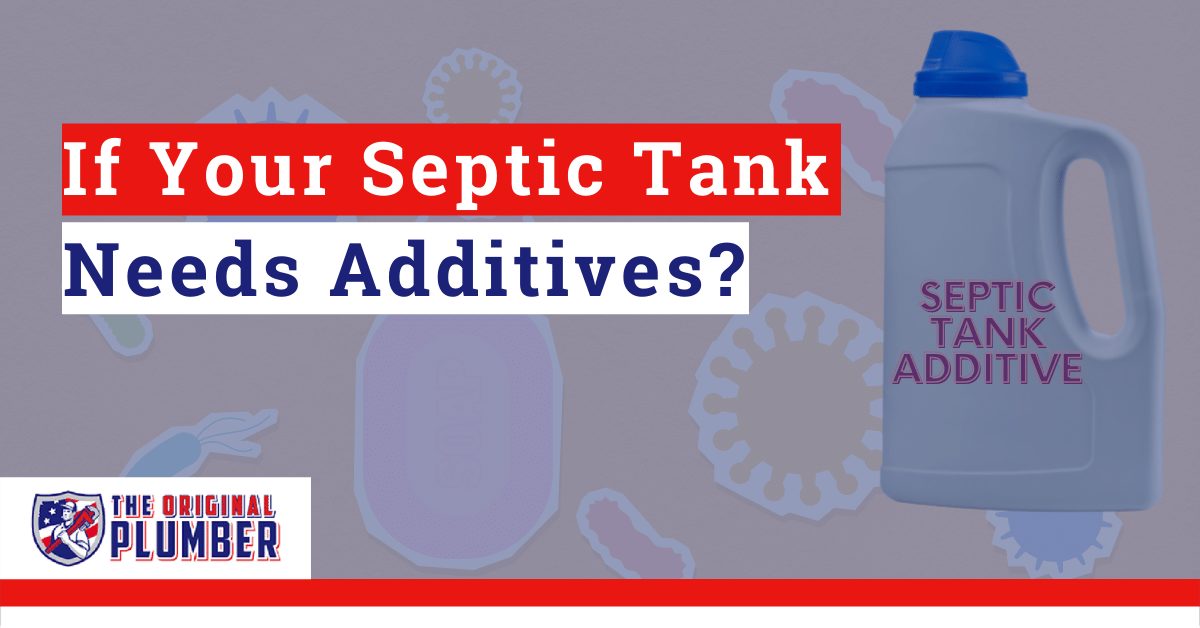
II. Types of Septic Tank Additives
Bacteria-based additives
Bacteria-based additives are a popular choice for many homeowners looking for natural ways to maintain their septic tanks. These additives provide a boost to the natural bacteria already present in the tank, helping to break down solids and prevent clogs. When choosing a bacteria-based additive, it’s important to look for products that contain a variety of different strains of bacteria to ensure the most effective treatment. Additionally, it’s important to follow the recommended dosage instructions to avoid overloading the system and causing more harm than good. Using bacteria-based additives can be a great way to keep your septic system running smoothly and efficiently, without the need for harsh chemicals or additives. [3][4]

Enzyme-based additives
Enzyme-based additives are a natural way to improve the efficiency of your septic tank. These additives work by breaking down solids, making it easier for the anaerobic bacteria in your tank to digest them. Unlike chemical additives, enzyme-based additives are non-toxic and won’t harm the bacteria essential to the wastewater treatment process. They are also more environmentally friendly and won’t damage your system like harsh chemical additives. Enzyme-based additives can be used regularly to ensure a healthy balance of bacteria in your system, and they are a safe and effective way to maintain your septic tank. [5][6]

Organic materials such as compost, manure, and sawdust
Using organic materials such as compost, manure, and sawdust is a great way to break down solids in your septic tank while also adding beneficial bacteria. These materials are readily available and are a cost-effective option for septic tank maintenance. Composting your own septic sludge with sawdust is also an environmentally friendly way to deal with solids buildup. However, it is important to remember that not all organic materials are suitable for use in a septic system. Always consult with a professional or local wastewater treatment facility to ensure that you are using the right materials for your specific tank. Regular maintenance is key in avoiding solids buildup and keeping your septic system running smoothly. [7][8]

Nitrogen-based additives
Nitrogen-based additives are one of the options that can be used to break down solids in septic tanks. This essential nutrient for plants can also fertilize your lawn or garden while helping to keep your septic system running smoothly. By adding nitrogen-based materials such as grass clippings or leaf litter to your septic tank, you can introduce beneficial bacteria that support digestion and breakdown of solids. However, it’s important to remember that not all additives are necessary and it’s best to experiment to see what works best for your system. Talking to a professional or local wastewater treatment facility can also help you find the right balance of additives and materials to keep your system running smoothly [9][10]

Mineral-based additives like greensand and charcoal
Mineral-based additives like greensand and charcoal are a great option to keep your septic system running smoothly. Greensand has a unique chemical structure that helps filter out impurities in your wastewater. Charcoal, on the other hand, helps to absorb odors and toxins in your septic tank. These supplements are also eco-friendly since they are made from natural materials. However, it’s important to remember that not all additives are necessary for your system. It’s best to talk to your septic tank installer or local wastewater treatment facility to find the right balance of additives that work for your system. [11][12]

III. Active Yeast as a Solution for Solids Breakdown
Definition of active yeast and its function in septic tanks
Active yeast is a natural remedy that homeowners often use to break down solids in septic tanks. It helps to keep the bacteria and enzymes happy in septic systems, which is important for breaking down waste materials. The proteins in yeast, called pectin, can help to break down plant cell walls and aid in the decomposition of solid waste. While it may sound strange to use yeast in a septic tank, it has been shown to be an effective way of maintaining a healthy septic system. However, it’s important to use active yeast in the correct amount and to not rely on it as the sole method of septic tank maintenance. [13][14]
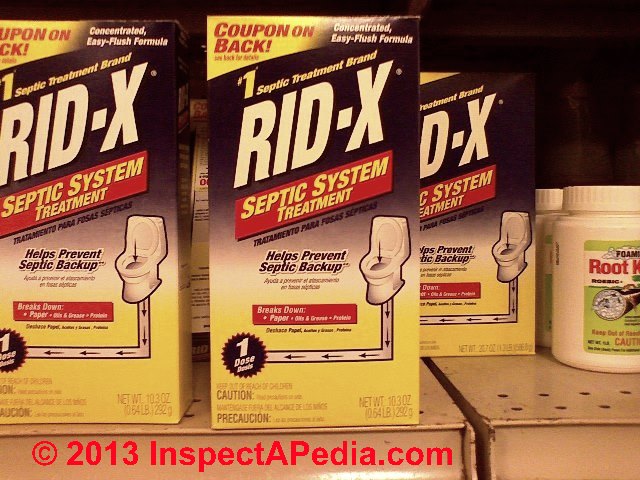
Recommended amount of active yeast to use
When using active yeast to break down solids in your septic tank, it’s important to use the recommended amount. Adding too much yeast can actually harm your septic system. The general recommendation is to add 1/2 cup of active dry yeast to your toilet bowl and flush it down. It’s best to let the yeast sit in your pipes for a few hours before running any water or flushing the toilet again. This will allow the yeast to work its magic in breaking down the solids in your septic tank. Remember, adding too much yeast can ultimately do more harm than good, so stick to the recommended amount for optimal results. [15][16]

IV. Backflushing as a Solids Breakdown Method
Explanation of backflushing as a process
Backflushing is a process that can be used to help break down solids in your septic tank. It involves using a machine to suck the wastewater and solids out of the tank and then pumping it back in through a pipe that has a nozzle at the end. The high pressure of the water spray helps break up the solid waste, allowing it to be more easily broken down by the bacteria in your tank. Backflushing is an effective way to help maintain your septic system, but it should only be done by a professional who has the right equipment and knows how to use it safely. [17][18]

Benefits of using backflushing for solids breakdown
Backflushing is an effective technique for breaking down solids in septic tanks. By removing wastewater from the tank and spraying it back at high force, it helps to break up solid waste, allowing it to flow more easily out of the tank. Not only does backflushing prevent solid buildup in the tank, but it also helps to prevent clogs in the system. This technique is highly recommended for those who want to maintain a healthy septic system, but it does require specialized equipment and can be quite smelly. It’s important to note that backflushing should only be used on wastewater, not solid waste or grease/scum. [19][20]

Professional and DIY backflushing options
Backflushing is a technique used to break down solids in septic tanks. It involves sucking wastewater from the tank and spraying it back into the system at high force. This helps to loosen and break down solids that may have accumulated in the tank. While it can be smelly and messy, it is an effective way to keep your tank running smoothly. You can choose to hire a professional to perform backflushing or do it yourself with a backflushing kit. If you’re having trouble with solids in your septic tank, backflushing may be an option to consider. [21][22]
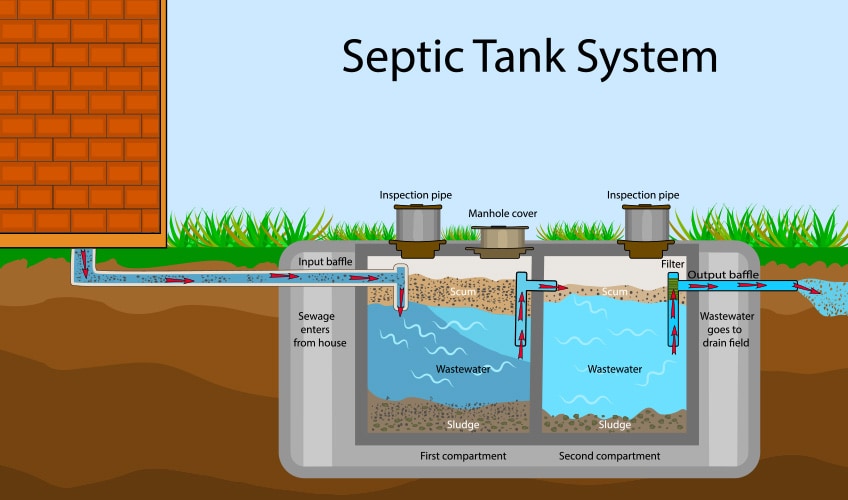
Use of agitators in septic tank maintenance
Agitators are a popular option for septic tank maintenance. The CrustBuster, for example, is a portable machine that agitates and mixes up the solids and liquids in the tank, making it easier to remove them. Through the use of specially designed blades and high-powered shaft rotation, the CrustBuster creates a lifting agitation which removes solid waste from the bottom of the tank while pulling the crust off the top. This machine saves time and money and is a great alternative to the old-school method of backflushing using a rake or a 2×4. However, it’s essential to use agitators with caution and always follow the manufacturer’s instructions. [23][24]

Benefits and drawbacks of using agitators
Using agitators in septic tank maintenance can be beneficial in breaking down solids. Agitators work by mixing the solids in the tank with the liquid, making it easier for bacteria to break down the waste. This can save you money on pumping costs and keep your system running efficiently. However, there are also drawbacks to using agitators. Overuse or improper use of an agitator can cause damage to your system, such as stirring up sludge and letting it escape into your drain field. It’s important to consult with a professional before using an agitator to ensure it’s the right choice for your system. [25][26]

When to consider septic tank pumping as a solution for solids buildup
Septic tank pumping should be considered as a solution for solids buildup when the tank becomes too full and can no longer effectively function. Signs that your tank may need pumping include slow draining fixtures, foul odors, and visible sewage backup. It is important to keep in mind that regular maintenance and proper use of additives can help extend the time between pumpings. It is recommended to have your septic tank inspected every three to five years and pumped as needed. When it comes to septic tank pumping, it is best to hire a professional to ensure the job is done safely and properly. [27][28]
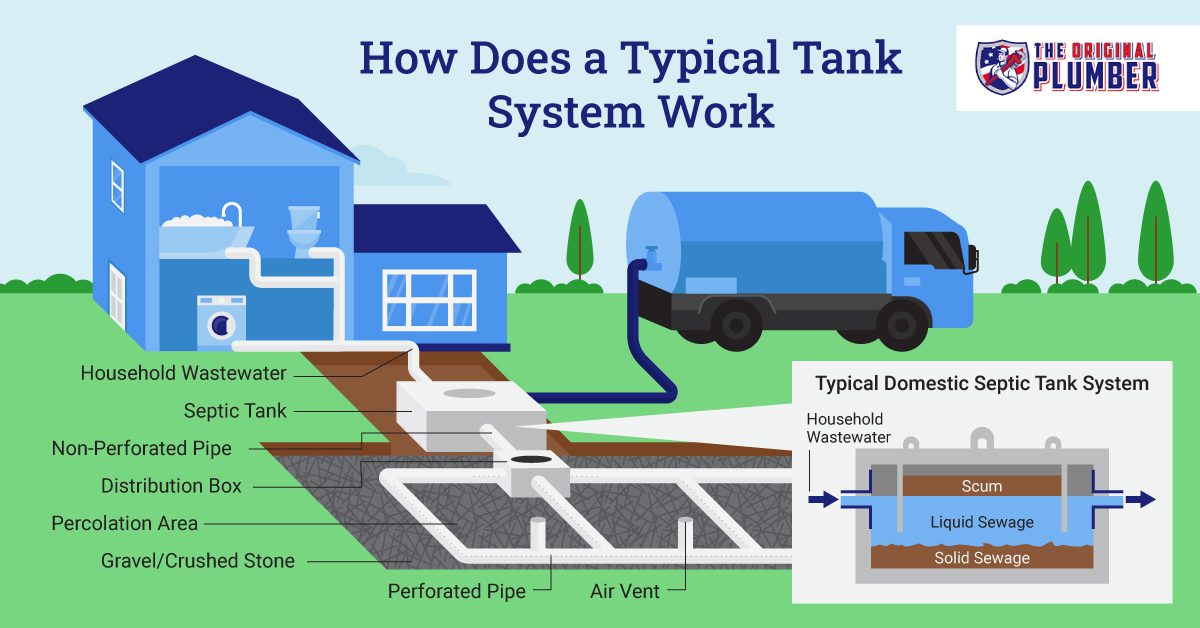
Importance of hiring a professional for septic tank pumping
Maintaining your septic system is important to avoid any problems caused by solids buildup. One of the crucial aspects of keeping your septic system running smoothly is pumping out the tank regularly. Septic tank pumping is not an easy job, which is why hiring a professional for the job is essential. Professional septic tank pumping services have the expertise, manpower, and equipment necessary to perform the task correctly and efficiently. Attempting a DIY approach to septic tank pumping can be hazardous, as it may result in injury, environmental damage, and even worse problems in your system. By hiring a professional, you can rest easy knowing that your septic tank cleaning is in safe hands. [29][30]

VII. Natural Home Remedies to Avoid
Warning against using harmful chemicals and acids in septic systems
It is important to be cautious of the chemicals and acids that you introduce to your septic system, as they can harm the healthy bacteria necessary for breaking down solids in the tank. Harsh chemicals like liquid chlorine bleach, antibacterial soaps, and drain cleaners can disrupt the balance of the bacterial ecosystem. Even products such as vinegar, which may seem like a natural alternative, should be avoided as they can lower the pH level and harm the bacteria in the tank. Instead, opt for natural remedies like baking soda, and be sure to read labels carefully before using any products in your septic system. Remember, regular maintenance and avoiding harmful chemicals will prevent solids buildup and ensure the longevity of your septic tank system. [31][32]

Explanation of why vinegar should not be used in septic tanks
While vinegar is a great natural cleaning solution for many household items, it is not recommended for use in septic tanks. Vinegar is an acid, and even though it is a weak acid, it can disrupt the balance of bacteria in the tank. This can lead to decreased effectiveness of the septic system, as the bacteria plays a crucial role in breaking down solids. Additionally, vinegar can cause damage to the concrete or metal components of the septic tank, leading to leaks and costly repairs. Instead, opt for natural remedies like baking soda, which are safe for use in septic systems and can help maintain a healthy balance of bacteria. [33][34]
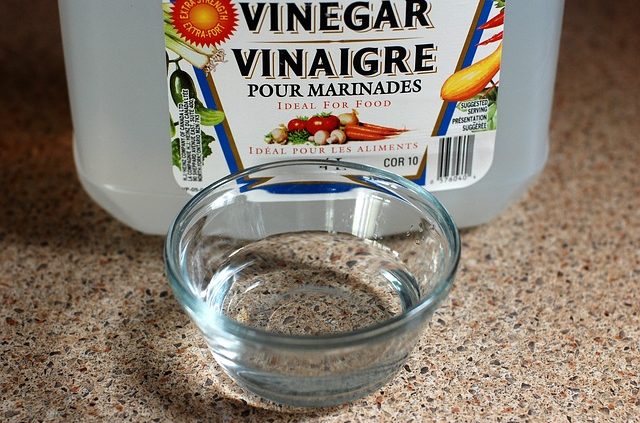
Alternative natural remedy: baking soda
If you’re looking for a natural way to maintain your septic tank and break down solids, adding baking soda is a great option. It’s easy to use and affordable for any budget. The baking soda acts as an environmentally safe and natural cleaner for your toilet, sinks, tub, and drains. By using baking soda instead of harsh chemical cleaners like bleach and ammonia, you’re keeping the good bacteria in your septic system alive and preventing clogs, backups, and odors. A simple mixture of a 1/4 cup of baking soda with 1/2 cup of vinegar and 2 tablespoons of lemon will work wonders for the health of your septic system. Just remember to avoid using harmful chemicals and acids, and opt for natural remedies like baking soda. [35][36]

VIII. Conclusion
Recap of different methods to break down solids in septic tanks
In summary, there are a variety of methods to break down solids in septic tanks. These include using bacteria-based or enzyme-based additives, organic materials such as compost, manure, and sawdust, nitrogen-based additives, mineral-based additives like greensand and charcoal, and active yeast. Backflushing and using agitators are also effective techniques. It’s important to note that harmful chemicals and acids should never be used in septic systems, as they can damage the bacteria in the tank and corrode pipes. Baking soda is a safe alternative natural remedy. Regular maintenance and pumping of the septic tank is crucial to prevent buildups and maintain a healthy system. [37][38]
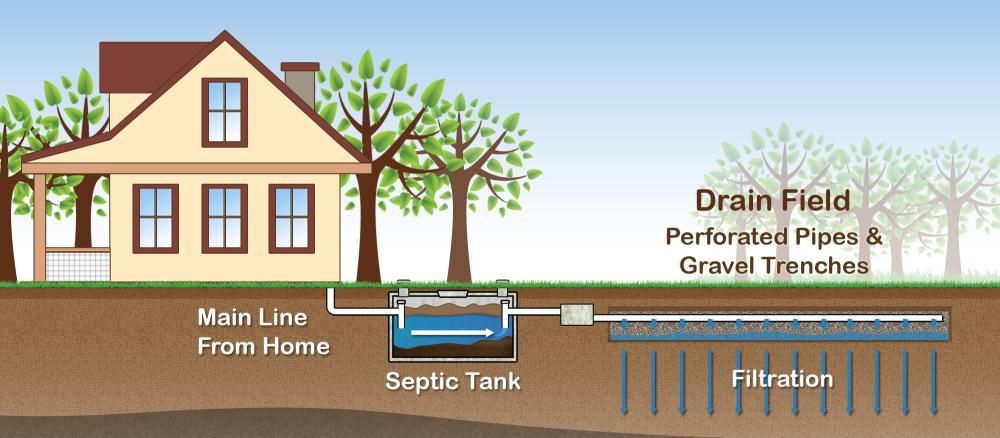
Importance of regular maintenance to avoid solids buildup
Regular maintenance of a septic tank is crucial in preventing the buildup of solids and maintaining a healthy septic system. Neglecting the necessary upkeep can lead to blockages, backups, and costly repairs. Routine inspections by a professional and proper use of septic-safe products can help ensure the proper function of the tank and its bacterial ecosystem. The use of natural additives such as yeast, compost, and sawdust can also break down solids. Backflushing and the use of agitators can aid in solids breakdown, but caution should be taken not to disrupt the healthy bacterial balance. In summary, regular maintenance is key in avoiding solids buildup and prolonging the lifespan of a septic system. [39][40]
